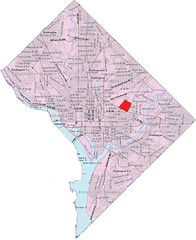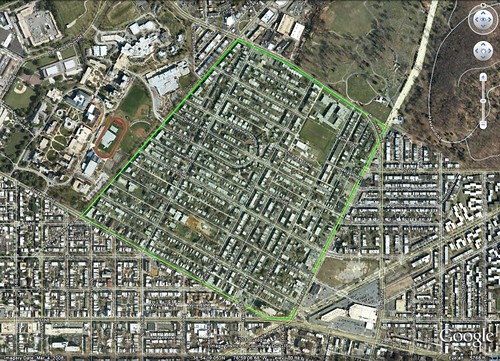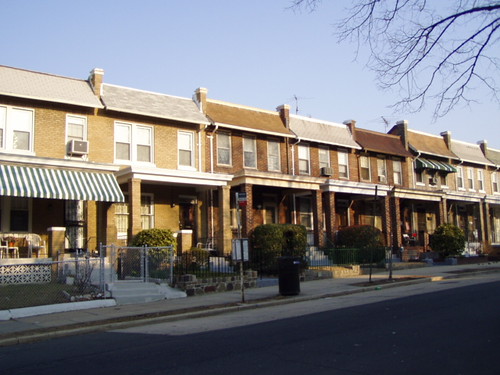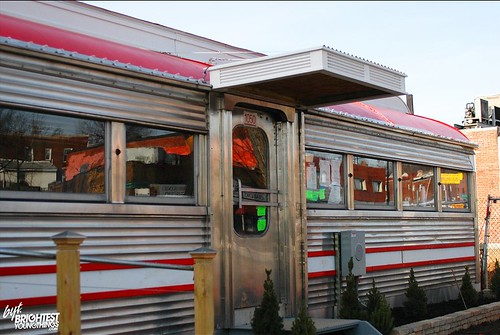A portrait of a neighborhood in transition

Posted September 2, 2010 at 1:26PM
Tuesday’s Washington Post featured an exceptionally well-written, extended article by reporter Dan Zak about a day in DC’s Trinidad neighborhood. Trinidad is a long-disinvested part of the city’s northeastern quadrant, and in many ways it is ripe for recovery. In fact, transition is already becoming visible, so that the community provides a vivid portrait of renewal’s components, hopes and fears. From Zak’s article:
“Hardly an oasis, Trinidad still smarts from a rash of homicides that prompted police checkpoints two years ago. At that time, on the 1100 block, a bar called Jimmy Valentine's Lonely Hearts Club had taken root where an income tax service used to be. Shortly thereafter, a new 18-unit condo building opened on L Street NE. Next, in September of last year, Sullivan's Southern Style Seafood set up shop in an empty former deli spot. And then the diner appeared in February.
“Something is slowly coming together in this part of Ward 5, short stack by short stack, condo by condo, crab cake by crab cake, Pabst Blue Ribbon by Pabst Blue Ribbon. Here are 24 hours on a single block of a neighborhood on the verge.”
Zak’s story is grounded in the neighborhood’s Capital City Diner, which itself appropriately evokes a mixture of new and old associations. One customer remarks that he used to eat there years ago, even though the restaurant has only been in business about six months. Starting with the early morning customers, patrons discuss local stories of crime and religion as school buses and commuters pass by. By the late afternoon, the scene evolves:
“In the 6 o'clock hour, as the light fades slowly behind the diner, teenagers gather on the hoods of cars underneath a Rémy Martin billboard (‘Things are getting interesting,’ it says in Spanish). They've got earbuds in their ears and clean their nails with switchblades. Big-band jazz wails from the diner's outdoor speaker. Across the street, a mayoral candidate in white shirt and tie heads back to his condo.
"'The community seems to want to do better,' says Sulaimon Brown . . . ‘The Safeway and CVS down the street have been remodeled, the streets have been resurfaced, there's increased police presence, the streetcar is coming, equity will go up, different types of people are being attracted here.’"
In the course of his stay, Zak also ventures to Jimmy Valentine’s, apparently a sort of trendy Goth club that attracts the kind of suburban hipster who carries a knife for self-defense in what is perceived as rough territory.  (For a more positive presentation of happenings in the neighborhood, though, see the interesting Frozen Tropics blog.)
(For a more positive presentation of happenings in the neighborhood, though, see the interesting Frozen Tropics blog.)
If Washington is to continue its remarkable comeback as a city, accepting investment, development and growth that can displace what would otherwise be suburban sprawl, neighborhoods like Trinidad will make it so. But there will be trade-offs, and not all will welcome change, for understandable reasons. Trinidad is not far from Brookland, for instance, where my friend G has made many friends among the old-timers but also has become frustrated by local resentment of people like himself.
The fear of gentrification in DC is real, and could even play a role in deciding the city’s upcoming mayoral race. One candidate has said as much: "There is a perception that I think has not been effectively addressed that there is an effort to move African Americans out of this city." Long-time DC residents still speak of “The Plan” that they believe is explicitly intended to disenfranchise them. There is a bit of a paradox, perhaps, in the reality that, even as minority residents suffered from their city's abandonment over decades of white flight and disinvestment, they nevertheless gained a measure of pride of ownership in what remained.
Whether that paradox can be resolved so that both old and new residents see benefit from change will be key to the future of our central cities (and, not insignificantly, our environmental footprint). The solutions are far from easy, and it will be in neighborhoods like Trinidad where they will have to be found.
Move your cursor over the images for credit information.


